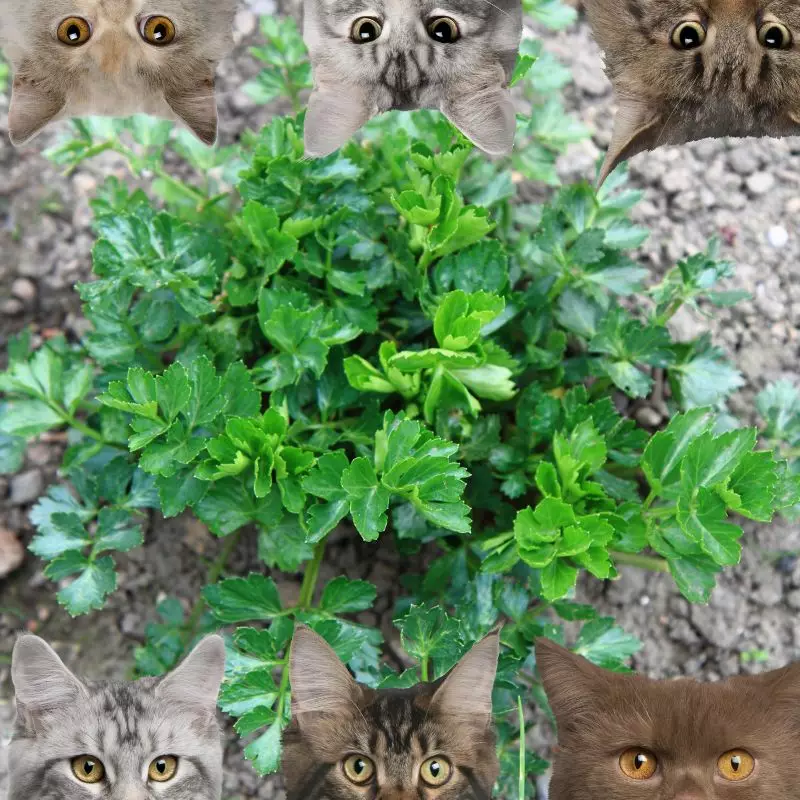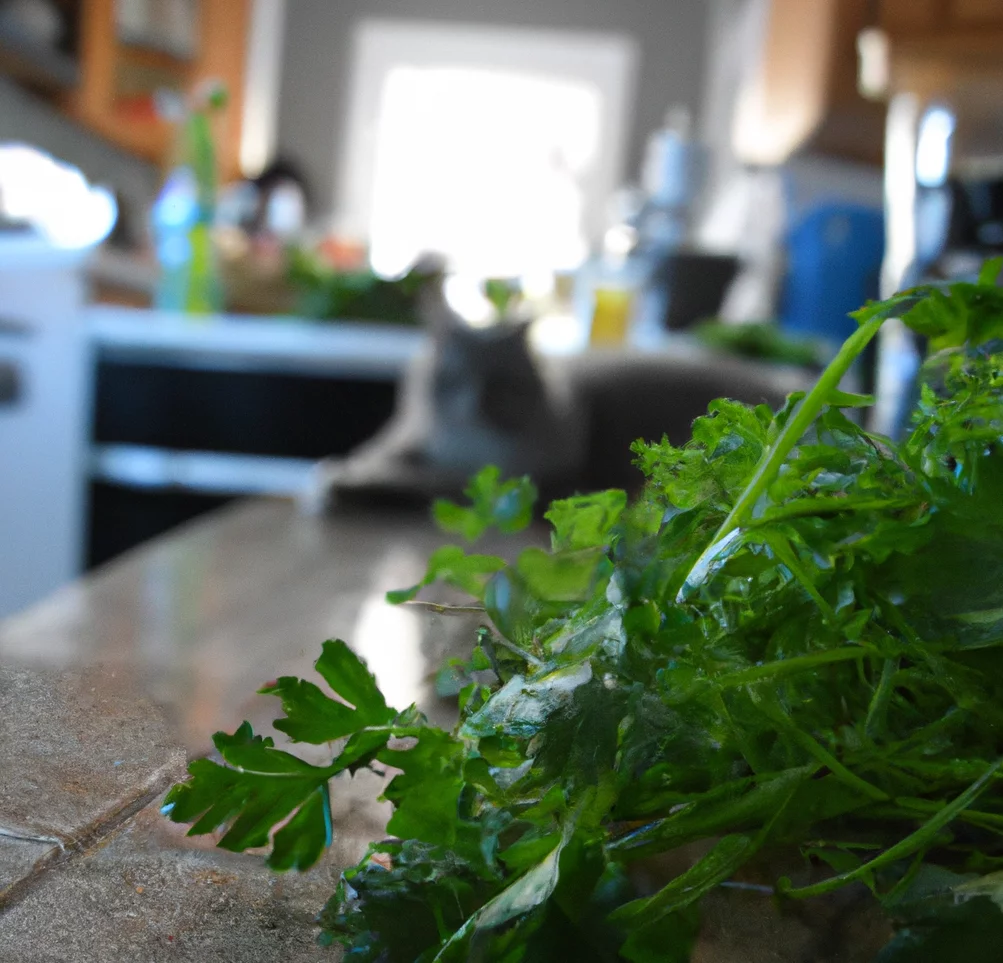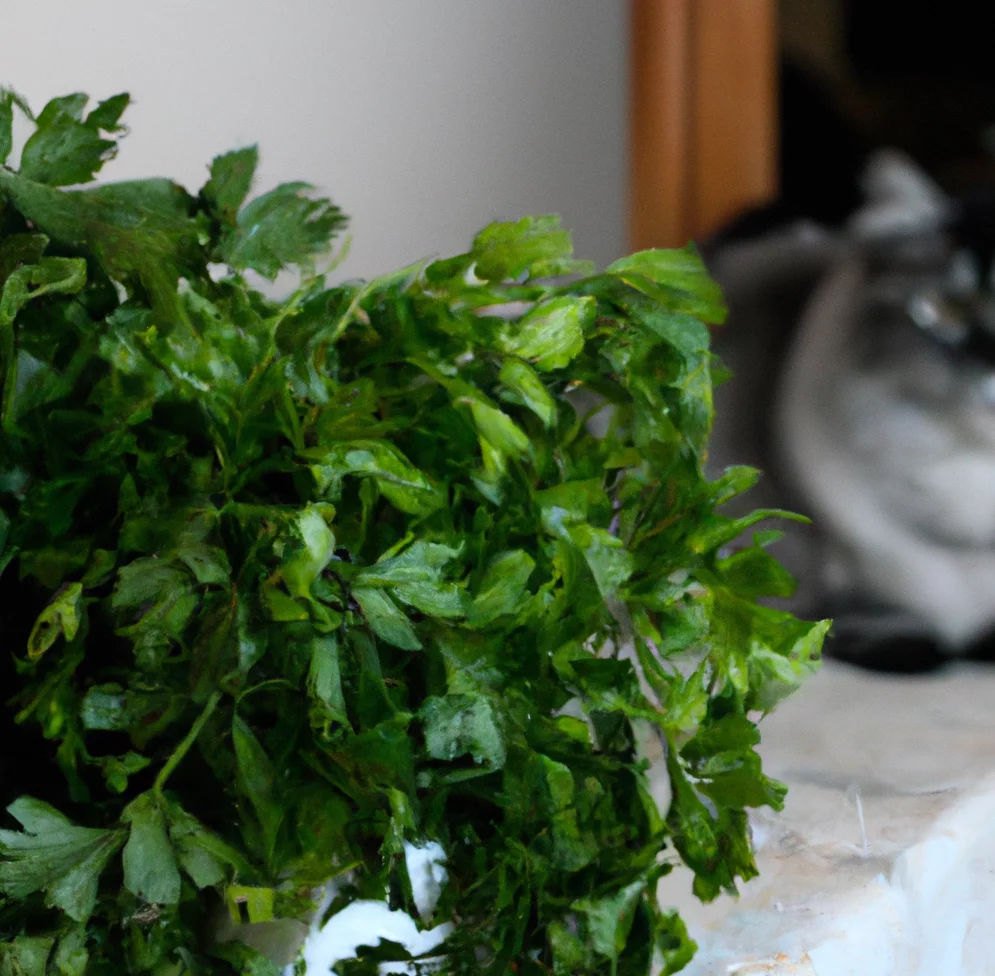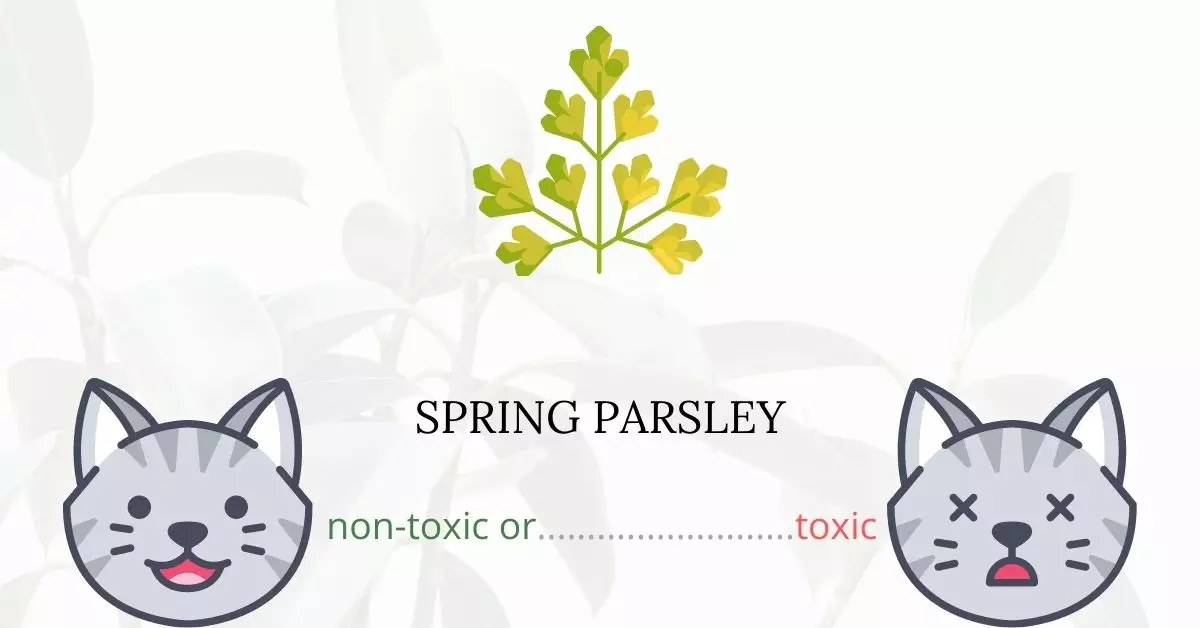Yes, Spring Parsley is toxic to cats.
This article, formulated in collaboration with a cadre of experienced DVMs (Doctors of Veterinary Medicine), sheds light on the perilous effects of Spring Parsley, providing authentic and current information. Their valuable contributions elucidate the potential dangers associated with various plants, focusing in this instance on Spring Parsley and its impact on cats. Additionally, extensive research was conducted, referencing high-authority websites like ASPCA and PetMD to ensure the delivery of accurate and reliable information regarding every plant discussed.
Spring parsley is laden with furanocoumarins, compounds that pose substantial risks to many animals, including cats. These compounds, synthesized by various plants, execute multiple functions, primarily serving as a deterrent to potential predators. The particular substance inducing toxicity is psoralen. Once psoralen is ingested, it integrates with cells and binds to their DNA.
When subjected to UV light, psoralen initiates a destructive process compromising the DNA structure, impeding its ability to reproduce, and ultimately causing cell death. This cellular demise induces burn-like reactions to sunlight, typical in animals affected by spring parsley poisoning. In addition to psoralen, the plant also contains multiple irritants that can provoke oral irritation. This article endeavors to unravel the intricacies of these hazardous effects, delving deep into the scientific aspects and offering insights on preventive measures, ensuring the well-being of your feline companions.
Clinical Signs of Spring Parsley Poisoning in Cats

Exposure to Spring Parsley can lead to serious and detrimental health symptoms in cats, necessitating immediate veterinary intervention as soon as any anomalies are detected. When a cat comes into contact, inhales, or consumes Spring Parsley, it may exhibit several clinical signs due to the plant’s harmful compounds, each corresponding to specific physiological disturbances. Below is a detailed examination of each sign and its underlying cause.
- Photosensitivity: Exposure to Spring Parsley increases a cat’s sensitivity to light due to the psoralen present in the plant, which, upon interacting with UV light, causes cellular damage. This heightened sensitivity means that cats may experience discomfort, irritation, or pain when exposed to normal levels of light, leading to possible avoidance of well-lit areas.
- Oral Irritation: Spring Parsley contains several irritants that can cause inflammation, redness, and pain in the cat’s mouth upon ingestion. This irritation can make it difficult for the cat to eat or drink and can lead to additional complications if left untreated.
- Phytophotodermatitis: This is a skin condition that occurs due to the combination of the furanocoumarins in the plant and exposure to sunlight, leading to inflammation of the skin. Cats affected by this condition may exhibit redness, swelling, blisters, and experience pain on the skin areas exposed to the sun.
- Sunburn: Psoralen, when activated by UV light, can cause severe burns on the skin, similar to sunburn. The skin may appear red, feel hot to the touch, and peel over time, causing considerable discomfort to the cat. This is more pronounced in areas with less fur coverage.
- Skin Irritation: Beyond causing sunburn, the compounds in Spring Parsley can irritate the skin even without sun exposure, leading to symptoms such as itching, redness, and swelling. This can lead to secondary infections if the cat scratches the affected areas excessively.
When you observe any of these signs, immediate veterinary consultation is paramount to prevent the progression of symptoms and to administer appropriate treatment promptly, ensuring the optimal recovery and well-being of your feline friend.
First Aid and Treatment of Spring Parsley Poisoning in Cats

To minimize further photosensitivity damage, the doctor may provide a dosage of hydrogen peroxide to the cat to induce vomiting. By causing the animal to vomit the contents of its stomach, no more psoralen should be absorbed. Following that, the veterinarian may provide activated charcoal to absorb any leftover spring parsley toxins in the intestines. The vet may then provide a little sedative to the cat and place it in a darkened enclosure to rest and enable the photosensitivity to fade. If the resultant dermatitis is severe, further treatment with steroids and antiseptics may be required.
Recovery from Spring Parsley Poisoning in Cats

The majority of cats will recover approximately a week after treatment, but those that have been severely sunburned may need to be monitored to ensure their wounds heal properly. When you get home from the vet, put the cat in a cool, dark place for a few hours to let the psoralen wear off. The vet may also offer owners a lotion to apply on uncomfortable areas of the cat’s skin to aid with recovery.
Prevention of Spring Parsley Poisoning in Cats
Remove any spring parsley that has sprung about your home. If spring parsleys are growing in your location, keep your cat indoors to limit the chance of exposure to this plant.
If you love plants but have cats at home, check out these lists:





